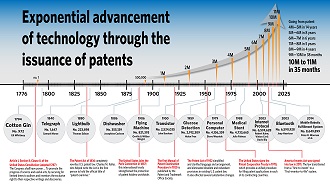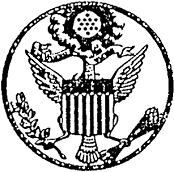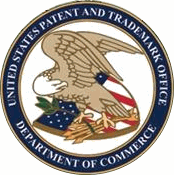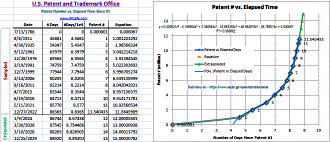USPTO Timeline: Milestones in Patents
|
|
1 | 2 | 3 | 4 | 5 | 6 | 7 | 8 | 9 | 10 | 11 | 12 | 13 | 14 | 15 | 16 | 17 | 18 | 19 | 20 | 21 | 22 | 23 | 24 | 25 | 26 | 27 | 28 | 29 | 30 | 31 | 32 | 33 | 34 | 35 | 36 | 37 Exponential advancement of technology through the issuance of patents. (USPTO graph) The United States Patent and Trademark Office (USPTO), issued its first patent on July 31, 1790, assigned to Mr. Samuel Hopkins for a process of making potash. That was three years after creation of the office in 1787. President George Washington signed that one. You might think the country's first issued patent is numbered one (later designated X000001), but that's not the case. Enumeration did not begin until July 13, 1836 when U.S. patent "No 1" was issued to Mr. John Ruggles for a traction wheel for steam locomotives. The U.S. government had issued 9,957 patents before starting a numbering system so for any patent number, add 9,957 for its actual place in line.
Official seals of the United States Patent and Trademark Office (1970 top, 2022 bottom) Here is something I have never seen addressed anywhere. Take look at the seal of the patent office. Does that look like a bald eagle body to you? Examine the legs and neck. Where is the head, and what is that object in the place of the head? Is that a flower? It has been written that Benjamin Franklin proposed using the turkey as the national bird. Could that be the body of a turkey? I certainly does not look like a bald eagle, which wasn't officially adopted until 1782. Samuel Morse received patent #1,647 in 1840 for his telegraph. Thomas Edison was assigned #223,898 for his electric light bulb in 1880. Note a quarter million patents had been issued in just 44 years. Patent #821,393 went to the Wright brothers in 1906 for their flying machine (1st flight occurred 12/7/1903). Dr. John Bardeen, et al, got patent #2,524,035 in 1950 for his transistor. In 1989, Steve Wozinak (aka "the Woz") was awarded #4,136,359 for his PC. Patent #6,574,628 went to Robert Kahn in 2003 for inventing the Internet (sorry, Algore). I created this Excel spreadsheet from USPTO data, and predicted the issue dates out to patent #15,000,000 using a 6th−order polynomial curve fit equation provided by Excel trend line function. It's Christmas Day of 2029. The one millionth patent was assigned in 1811. #2,000,000 happened in 1935. The ten millionth patent was issued in 2018 for coherent ladar using quadrature detection. #11,000,000 was awarded just three years later. By process of elimination, I found that as of this very moment (10:30 am EST, December 27, 2022), the highest patent number assigned per the USPTO's website is US11,540,433B2, to Mr. Lawrence R. Sadler for "Shielding Material for Electromagnetic Pulse Protection." Hmmm, I wonder if it's another type of tinfoil for guarding against government brain intrusion?≠ From the USPTO website:
Posted December 27, 2022 |
 "
"


